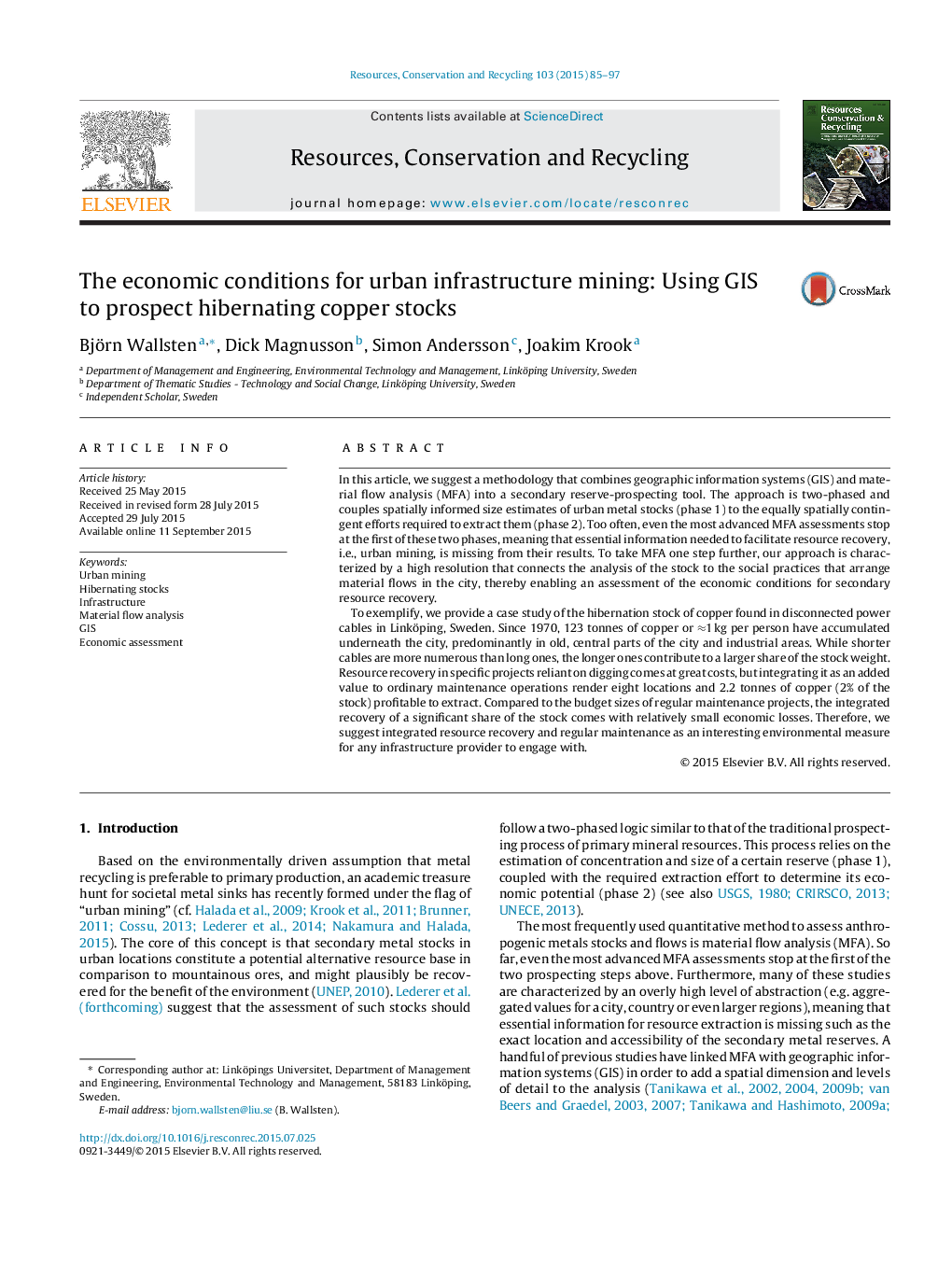| Article ID | Journal | Published Year | Pages | File Type |
|---|---|---|---|---|
| 1062775 | Resources, Conservation and Recycling | 2015 | 13 Pages |
•We characterize the hibernating copper stock in the power grid of Linköping, Sweden.•We combine geographic information systems and material flow analysis.•Analysis of stock size, spatial dispersion and economic conditions for its recovery.•Localized knowledge important to engage in urban infrastructure mining.•Integrating recovery and maintenance is suggested as environmental measure.
In this article, we suggest a methodology that combines geographic information systems (GIS) and material flow analysis (MFA) into a secondary reserve-prospecting tool. The approach is two-phased and couples spatially informed size estimates of urban metal stocks (phase 1) to the equally spatially contingent efforts required to extract them (phase 2). Too often, even the most advanced MFA assessments stop at the first of these two phases, meaning that essential information needed to facilitate resource recovery, i.e., urban mining, is missing from their results. To take MFA one step further, our approach is characterized by a high resolution that connects the analysis of the stock to the social practices that arrange material flows in the city, thereby enabling an assessment of the economic conditions for secondary resource recovery.To exemplify, we provide a case study of the hibernation stock of copper found in disconnected power cables in Linköping, Sweden. Since 1970, 123 tonnes of copper or ≈1 kg per person have accumulated underneath the city, predominantly in old, central parts of the city and industrial areas. While shorter cables are more numerous than long ones, the longer ones contribute to a larger share of the stock weight. Resource recovery in specific projects reliant on digging comes at great costs, but integrating it as an added value to ordinary maintenance operations render eight locations and 2.2 tonnes of copper (2% of the stock) profitable to extract. Compared to the budget sizes of regular maintenance projects, the integrated recovery of a significant share of the stock comes with relatively small economic losses. Therefore, we suggest integrated resource recovery and regular maintenance as an interesting environmental measure for any infrastructure provider to engage with.
